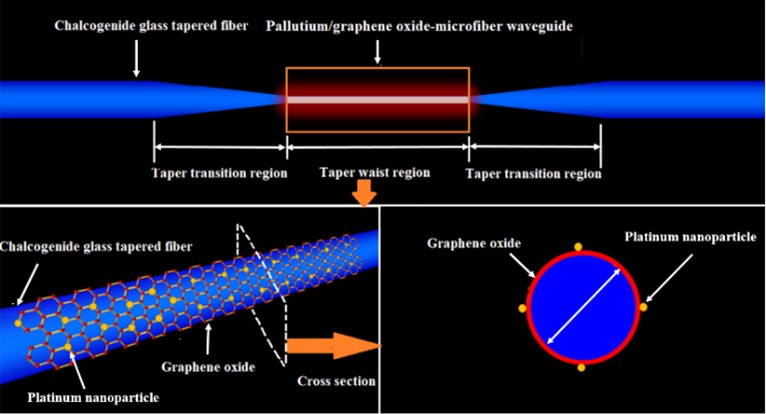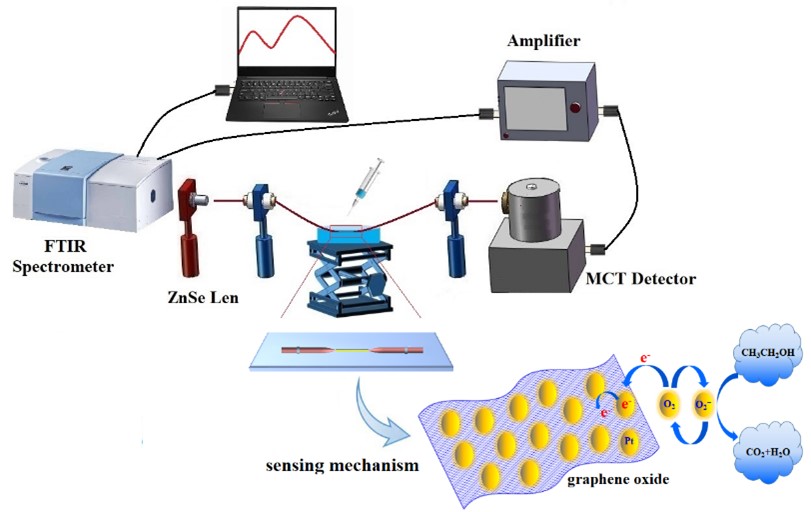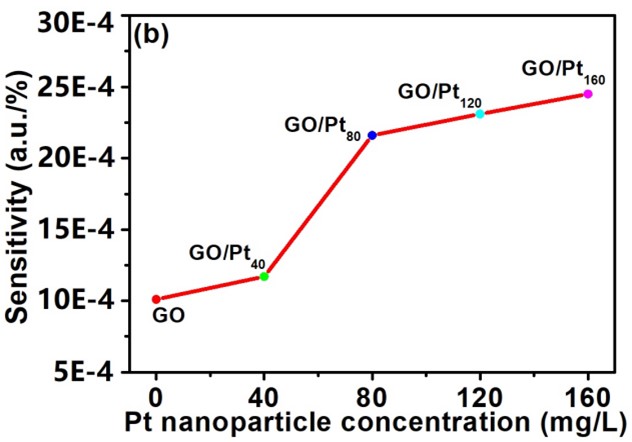The optical fiber evanescent wave sensor have been widely used in biomedical, industrial pollutants, food detection, and other fields due to its high sensitivity, fast response, simple structure, and easy integration with other sensing and detection technologies. In recent years, research on the evanescent wave sensing based on low loss quartz optical fibers has been further expanded and applied to the detection of biological, organic solutions, gases, and other substances. However, due to the limitation of the working wavelength of quartz optical fibers within 2.3 μm, it is impossible to transmit light in the mid-infrared wavelength, making it difficult to apply to sensing and detection in the mid-infrared field. Chalcogenide glass fiber with ultra wide infrared transmission range can be used as a sensing medium in the fields of wastewater pollutants and liquid monitoring, biomedical detection, and other sensing fields. However, the sensing sensitivity of optical fibers is limited. How to further improve the sensing sensitivity of chalcogenide glass fiber has become one of the research hotspots.
In this research work, the Ge15Sb20Se65 chalcogenide tapered fiber is employed as the optical transmission structure, and the two-dimensional nano material graphene oxide is selected as the sensitizer. Platinum nanoparticles/graphene oxide coating is deposited in the sensing cone area of the tapered fiber through the "liquid deposition method" to Explored and achieved the research on Ge15Sb20Se65 tapered fibers functionalized by graphene oxide (GO) doped with platinum nanoparticles (Pt) for ethanol monitoring with higher sensing sensitivity. Figure 1 is the schematic diagram of the coated tapered fiber sensor model. graphene oxide nanocomposites coating can enhance adsorption and enrich ethanol molecules in the coating. Based on the principle of charge transfer causing refractive index changes, platinum nanoparticles as photocatalysts can promote charge transfer to the graphene oxide layer, thereby enhancing the evanescent field strength of tapered fiber, as shown in Figure 1. The results showed that Doped photocatalyst platinum nanoparticles can greatly enhance the sensing sensitivity. With the increase of the platinum nanoparticles concentration, the sensing sensitivity of platinum nanoparticles/graphite oxide coated tapered fiber for ethanol detection increased. The sensing sensitivity of 40 mg/L, 80 mg/L, 120 mg/L and 160 mg/L platinum nanoparticles/graphite oxide solution coated tapered fiber for ethanol detection was 11.7 E-4 a.u/%, 21.6 E-4 a.u/% 23.1 E-4 a.u/% and 24.5 E-4 a.u/%, as shown in Figure 3. The sensing sensitivity of Pt/GO-coated Ge15Sb20Se65 tapered fiber with a concentration of 160 mg/L for detecting ethanol is 2.43 times that of GO-coated tapered fiber, and 7 times that of uncoated tapered optical fiber. At the same time, the sensing properties of tapered fiber evanescent wave sensor deposited with Pt/GO and GO were numerically simulated, which verified the experimental results. The research demonstrated that the Pt/GO functionalized Ge15Sb20Se65 tapered fiber can significantly enhance the sensing sensitivity for ethanol solution detection.
This research work provides scientific data and technical reference for promoting the practical development of chalcogenide tapered fiber sensors with high sensing sensitivity in the future.

Fig. 1. Schematic of the platinum/graphene oxide-tapered fiber waveguide

Fig. 2. Experimental equipment for aqueous ethanol sensing


Fig. 3. (a) Variation of ethanol absorbance at 9.20 μm with four platinum/GO-coated sensors for detecting aqueous ethanol solution. (b) Relationship between the sensing sensitivity of coated sensors and the concentration of platinum/GO nanocomposite.


